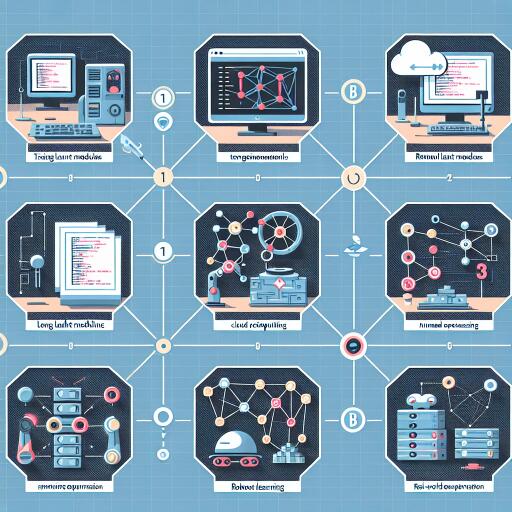7 Ways to Train LLMs Without Human Intervention
The advent of Large Language Models (LLMs) has revolutionized how we interact with technology. However, the traditional training of these models often requires heavy human intervention, notably through the painstaking task of data labelling. Not only is this process time-consuming, but it can also be prohibitively expensive, with costs for labelling tasks varying between $0.05 to $0.30 per label—quickly adding up to millions of dollars for large-scale projects.
Fortunately, innovative methods are being developed to reduce human involvement in the training of LLMs, potentially lowering costs and expediting the development process. Here, we explore seven cutting-edge techniques that promise to make LLM training more autonomous and efficient.
1. Programming Language Grounding (PLaG)
PLaG allows LLMs to process graph structures by encoding them into a format comprising nodes and edges represented as tokens. This method enhances the models’ reasoning and problem-solving abilities, making them adept at dealing with structured data for applications like knowledge graphs and network analysis.
2. Self-Rewarding Language Models (SRLMs)
Introduced by Meta, the SRLM approach leverages a unique LLM-as-a-Judge mechanism, enabling models to generate their own rewards based on their performance. This facilitates a self-improving loop, reducing the reliance on human feedback and potentially leading to capabilities that surpass human limitations.
3. Autonomous Learning
By simulating the way humans interact with text, Autonomous Learning promotes independent learning in LLMs. The model seeks out its knowledge gaps, iteratively learning and reinforcing its understanding, thereby eliminating the need for annotated datasets and human supervision.
4. Structured Inspired Training (SIT)
SIT fine-tunes LLMs by engaging them in tasks that require a sequential completion of sub-tasks. This method does not only improve the models’ ability to follow multi-step instructions but also boosts their performance across various tasks.
5. Interactive Self-Reflection (ISR)
ISR empowers LLMs to evaluate and correct their responses through self-review. This process promotes autonomous learning and continuous improvement, paving the way for more accurate and reliable AI systems.
6. Self-Play Adversarial Games (SPAG)
In SPAG, LLMs are pitted against each other, alternating roles between attacker and defender. This strategy encourages the models to hone their reasoning skills in a competitive environment, enhancing their overall robustness and capabilities.
7. Automated Data Augmentation
By generating natural language descriptions of technical scripts, this method provides a wealth of diversified, high-quality data for LLM training. Significantly reducing manual effort, automated data augmentation ensures the development of more robust models, particularly in niche tasks like code generation.
These seven innovative training methods mark a paradigm shift in the development of LLMs, moving towards a future where models can learn, adapt, and improve with minimal human interference. As these techniques continue to evolve, they hold the key to unlocking more advanced, efficient, and self-reliant language models, heralding a new era in artificial intelligence.










